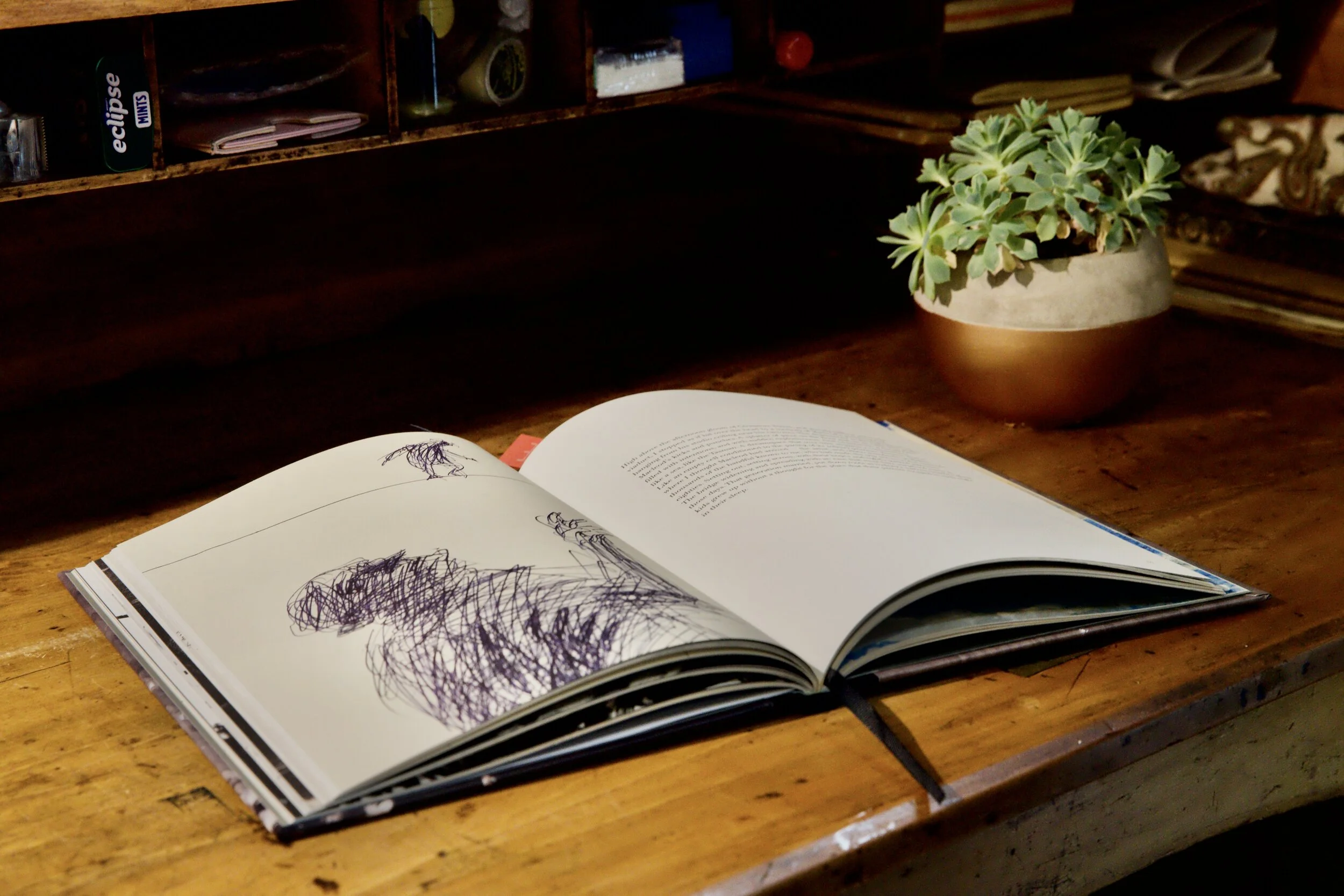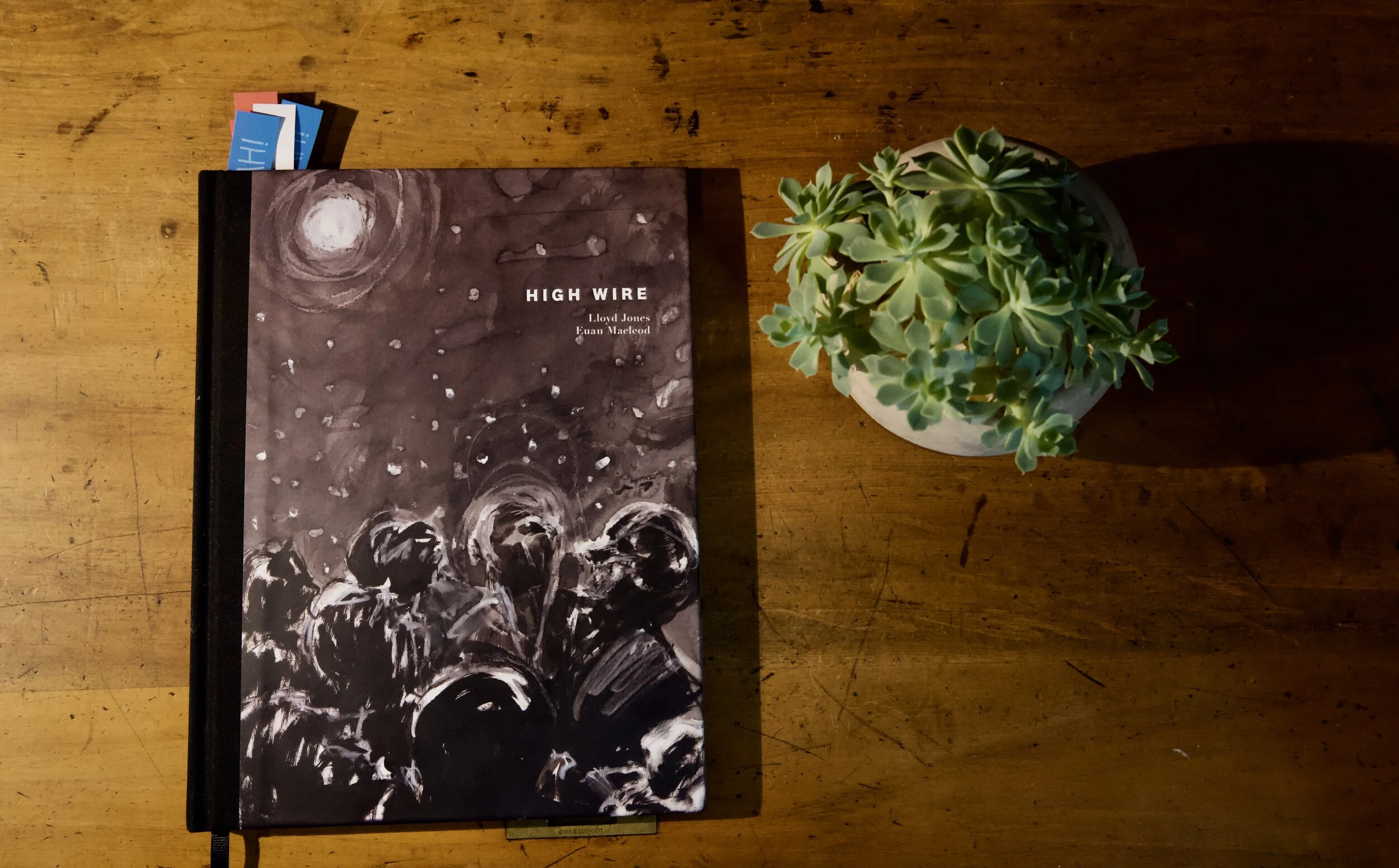Risks and High Wire: an interview with Lloyd Jones
W. G. Armstrong’s Swing Bridge, Newcastle, UK
I’m a secret admirer of bridges. How could I not be, coming from Newcastle-Upon-Tyne? Seven great bridges cross the waters of the Tyne River, joining the city of Newcastle with the township of Gateshead.
Each bridge is a work of art – one built as a sort of prototype for the much larger Sydney bridge. Another (and perhaps my favourite) sits low over the water and pivots – or ‘swings’ – on its axis to let tall ships slip up and down the river unheeded.
In North East folklore, there are many stories and songs about crossing the Tyne, ‘Waters of Tyne’ is one of the most famous. It’s about a woman crying for a boatman to row her across the river to her lover on the other side. A lament about a lack of bridges.
High Wire
It’s no wonder then, that I was excited to hear about High Wire, a new book about bridges and crossings by New Zealand writer Lloyd Jones and artist Euan Macleod. Wellington-based Lloyd writes his way across the Tasman to Sydney-dwelling Euan. Each harnesses their art to cross the waters between them and form a bridge.
It begins: I’d written to Euan Macleod proposing a project about bridges. He replied enthusiastically – and, over the coming months, sketches and drawings of bridges tumbled freely out of him.
High Wire by Lloyd Jones and Euan Macleod, designed by Gary Stewart
Not an illustration! High Wire is the first in the new korero series from Massey University Press
Published by Massey University Press and designed by Gary Stewart (The Gas Project), it’s the first in the ‘korero series’ – which invites collaborations between two different kinds of artistic intelligence, working on the same topic. In the wake of lockdowns and a global pandemic, it seems fortuitous that this first topic happens to be bridges – connections – in a time when so many must feel so isolated.
High Wire also talks about another way to bridge gaps. Philippe Petit, the tightrope walker who famously tip-toed between the twin towers of the World Trade Center, crops up often. Lloyd seems in awe of the feat (who wouldn’t be), but there’s also a sickly sense of fear that comes through when Lloyd writes about bridging gaps, particularly at giddy heights.
Fear and Risk
The height terrifies, yet I am drawn to the edge – what to make of this curious temptation to throw myself off? […] It’s inexplicable. But there it is – a temptation with gravitational pull.
My first question to Lloyd is: do you get vertigo?
Yeah… I think I probably do. I’ve done a few mountain walks where at some point there’s some exposure on the track and I don’t like that.
“I think anyone with an imagination falls a thousand times down a cliff face… why do you ask?”
Is that feeling, of wanting to be on the edge, but equally to feel dizzy and afraid at the thought of being on the edge, anything like the condition of being an artist?
“That’s right,” he replies.
“It’s hand in hand with the fear, or the possibility of falling. But unless you take on that fear, you won’t do anything interesting. You’ll never enter that new space that artists endeavour to get into.
“It’s a glove and hand thing: you can’t have one or the other. If you want to go somewhere new, you must risk failure. And I think all artists with a soul will recognise that risk and reward of accepting failure as a possibility.”
Does Euan feel the same?
“He’d be nodding his head rather vigorously, I suspect,” Lloyd replies.
Lloyd goes on to describe the nature of collaboration; another risk. To be the first in a new series. To work with another artist on a new artistic endeavour.
You have to be prepared for the possibility that it might not work. It is speculative. But in the case of High Wire, Euan had already done some work on bridges and quite coincidently I had thought it might be interesting to explore bridges metaphorically. And, as these things do, the conversation begins to shift and we end up with High Wire, which is supposed to characterise that space that art occupies.”
Lloyd will invite others to walk the high wire and partake in this risk. There will be two projects each year in the korero series. Lloyd will match-make other artists and writers and ask them to bridge the gap and begin a collaborative, artistic conversation.
I mistakenly say the word “illustration” in one of my questions and Lloyd is not keen on this. This is not a project where one artist illustrates another. “That’s a dirty word,” he tells me. It’s about bouncing off the other and being shifted in some way to do something you otherwise would not create.
An Exercise in Translation
Euan’s work is raw, “back-of-the-envelope sort of stuff”. Beautifully photographed by Michele Brouet, the scratchy pen marks, indentations and paper imbued with water and ink are expressive. They remind me of bridges in that they have the depth of something that’s taken many years to build, but the expression of journey that’s hurried and purposeful: a commute. They’re going somewhere.
“It’s almost an exercise in translation. He’s responding to my words, then in exchange, his drawing pulls me into something. That’s how it worked for us.
“What happened with Euan and I was very much an organic thing. Then, the other piece of the puzzle is Gary Stewart, who’s down your way (in Central Otago). He’s a brilliant designer. Then all the pieces get thrown in the air and we have to assemble the thing. Dismantle it, reassemble it… take it down, make it up… the whole thing is being constantly made.”
Paper Architecture
I read the book conventionally – left to right, front to back – in the first instance, but on revisiting it, I’ve skipped backwards and forwards as I would if I were re-reading a poetry collection. Is this the intention?
“You could… but I’m hoping the reader is being led into a space without being aware of it. They should put aside all other ideas and beliefs. They are walking across the Tasman. To get that, you should read it conventionally. But I see what you mean, you could jump back and forth…”
Euan and Lloyd have collaborated before. They worked with Ron McBurnie in creating ‘Hearsay’ – an unconventional artist’s book that’s around two metres long and one metre high. More sculpture than book, there’s only half a dozen of copies in art galleries, universities and libraries across Australasia.
This interview was originally intended for a print magazine, one which hasn’t survived the Covid-19 pandemic. In a world where an overwhelming amount of content is blandly published online, I ask Lloyd if collaborating with visual artists, and creating texts intended to be enjoyed as tactile, almost sculptural artworks is the future of printed matter.
“Texture… something being tactile… that connection with the paper is a sensual thing. A very different reading experience to reading online. It’s a different relationship. I just can’t read online. The problem is that the eye is asked to travel in a way in which it doesn’t naturally travel on a printed book.
“[…] it’s not exactly a new thing. [Collaborations] like this have been done for over one hundred years. I hope it is [the future] … it probably will be. It’s just so interesting. You don’t always get it right.
“I spent a lot of time looking at Victoria Sate Library’s incredible collection of artist’s books before Christmas last year. And it is a bit hit and miss. Sometimes it is illustration or it’s not ambitious enough, or too ambitious. It’s an incredible speculative area which I think is what makes it so exciting. I really enjoy doing it.”
I’d say High Wire is a hit. It’s set to be released on 14th May 2020 and copies cost $45 (NZD). Ask for it at your local book shop or find it on Massey Press online.
Got an art project you’d like to have a chat about? Get in touch. Though a number of print magazines I work for have stopped printing, I’m looking at ways to continue singing about the arts, particularly in the Central Otago region, in any way I can.





